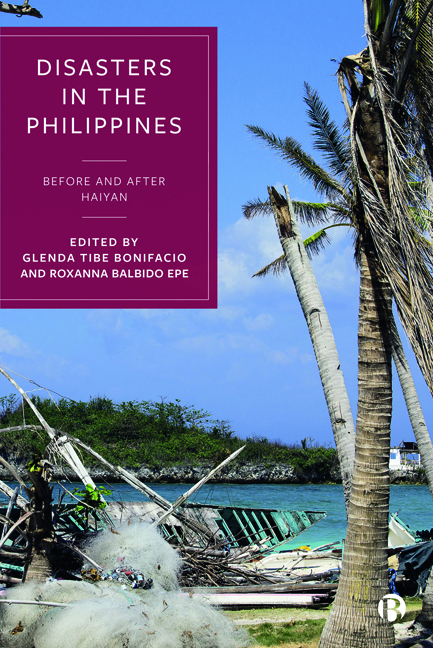14 - Increasing Resilience in Communities Affected by Typhoon Haiyan: World Renew’s Response in the Philippines
Published online by Cambridge University Press: 18 January 2024
Summary
Introduction
Typhoon Haiyan (locally known as Yolanda) hit the Visayas regions of the Philippines on November 8, 2013. With wind speeds peaking at 315kph, the storm remains one of the strongest and most destructive typhoons ever to make landfall (Santos 2013). While the international community responded quickly to typhoon Haiyan's devastation, many nongovernmental organizations (NGOs) were present until December 2014, for the emergency response and initial recovery phases. By June 2015, most humanitarian organizations had departed or ended their activities, thus reinforcing a notable gap between short-term humanitarian responses to disasters and the long-term development needs of affected communities. In their 2016 study of resilience and disaster trends in the Philippines, Alcayna et al (2016, 5) found that the Philippines had received “less than half of the $788m needed for recovery” six months after typhoon Haiyan struck the region.
World Renew's (WR) initial funds allowed it to respond in the first two years to assist over 12,000 families, followed by additional funding from Global Affairs Canada (GAC) in 2015 for the 46-month development project. It was a consortium project with Adventist Development and Relief Agency (ADRA) Canada. The final project, named “Restoring, Empowering and Protecting Livelihoods” (REAP), aimed to reduce vulnerability and increase community resilience to mitigate the impacts of future hazards that might be exacerbated by the effects of climate change. ADRA and WR each had their target villages to work in.
This chapter describes how WR Canada's Senior Program Manager and its two Philippines Program Managers worked across various phases of disaster response to build community resilience, moving communities toward the achievement of several Sustainable Development Goals. The behavioral challenges that WR encountered and overcame as communities transitioned through each phase of recovery are described. Examples illustrate sustainable development goals (SDGs) on how gender equality and participation of women promoted women's empowerment (SDG 5); stronger engagement with local stakeholders along with village savings contributed to more sustainable economic growth and empowerment (SDG 8); climate adaptive agricultural activities helped combat the effects of climate change (SDG 13); environmental protection impacted the conservation of oceans and marine resources (SDG 14); and soil biodiversity (SDG 15).
- Type
- Chapter
- Information
- Disasters in the PhilippinesBefore and After Haiyan, pp. 287 - 316Publisher: Bristol University PressPrint publication year: 2023

